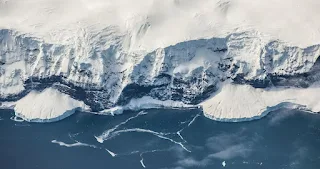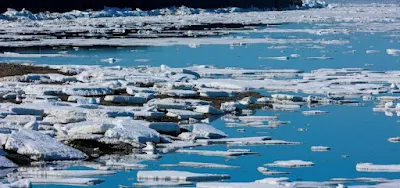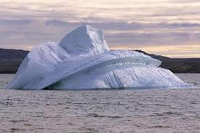Showing posts with label melting of polar ice. Show all posts
Showing posts with label melting of polar ice. Show all posts
Monday, March 03, 2025
Melting Antarctic ice could slow world's strongest ocean current, study says
The world's strongest ocean current could slow as melting Antarctic ice sheets flood it with fresh water, according to research published on Monday that warned of "severe" climate consequences.
Friday, April 21, 2023
Sea Ice In Antarctica Drops To Lowest Level In February 2022 As Sea Levels Rising - WMO
Sea ice in Antarctica dropped to its lowest recorded level of 1.92 million square kilometers (741,316 square miles) as of February 25, 2022, further melting during the rest of last year with record lows for June and July, the annual report from the World Meteorological Organization (WMO) said on Friday.
Ετικέτες
Antarctica,
melting of polar ice,
sea level rise,
WMO
Tuesday, March 21, 2023
Russia, China Intend To Create Working Body On Northern Sea Route Project
Russia and China intend to create a working group that will oversee the Northern Sea Route project, Russian President Vladimir Putin said on Tuesday.
Ετικέτες
Arctic,
China,
melting ice,
melting of polar ice,
Northern Sea Route,
Russia
Friday, August 12, 2022
Arctic warming faster than presumed: Finnish study - China.org.cn
The rate of polar warming has been underestimated, with the Arctic region warming four times faster than the world average over the past 43 years, a new study has revealed.
Ετικέτες
Arctic,
melting ice,
melting of polar ice,
study
Monday, January 24, 2022
Monday, October 18, 2021
Wednesday, June 23, 2021
Thursday, June 17, 2021
Wednesday, July 12, 2017
Tuesday, March 21, 2017
Monday, November 14, 2016
Friday, June 10, 2016
First Russian ice-breaker in 45 years floated out
Ετικέτες
Arctic,
icebreaker,
melting of polar ice,
Russia,
United States
Thursday, April 14, 2016
Wednesday, February 10, 2016
Thursday, December 31, 2015
Monday, November 02, 2015
Mass gains of Antarctic ice sheet greater than losses (NASA)
Ετικέτες
Antarctica,
Glaciers,
ice sheet,
melting of polar ice,
NASA,
sea level rise,
study
Wednesday, January 14, 2015
Monday, September 15, 2014
Glaciers in northern Antarctic Peninsula melting faster than ever despite increased snowfall
An international team of researchers, led by Dr Bethan Davies, from Royal Holloway, University of London, has discovered that small glaciers that end on land around the Antarctic Peninsula are highly vulnerable to slight changes in air temperature and may be at risk of disappearing within 200 years.
Temperatures are currently rising rapidly in the Antarctic Peninsula. Because warmer air holds more moisture, the amount of snowfall has also increased. Some researchers have suggested that this may offset the melting of the glaciers, however this study found that just a small rise in air temperature increased melting so much that even large amounts of extra snowfall could not prevent glacier recession.
Temperatures are currently rising rapidly in the Antarctic Peninsula. Because warmer air holds more moisture, the amount of snowfall has also increased. Some researchers have suggested that this may offset the melting of the glaciers, however this study found that just a small rise in air temperature increased melting so much that even large amounts of extra snowfall could not prevent glacier recession.
Friday, November 09, 2012
Enhanced melting of Northern Greenland in a warm climate
(Credit: Image courtesy of University of Bergen)
-
ScienceDaily (Nov. 9, 2012) — In a new study from the Bjerknes Centre for Climate Research, scientists show how the northern part of the Greenland ice sheet might be very vulnerable to a warming climate
The study is based on simulations with a state of the art global climate model and a dynamic ice sheet model of the last interglacial warm period. This period (~126 thousand years before present) is the most recent in Earth's history with temperatures warmer than present in the Arctic region, and has frequently been used as an analogue for a future greenhouse climate. During this period we know that the Greenland ice sheet was significantly reduced in size compared to today.
Subscribe to:
Posts (Atom)















